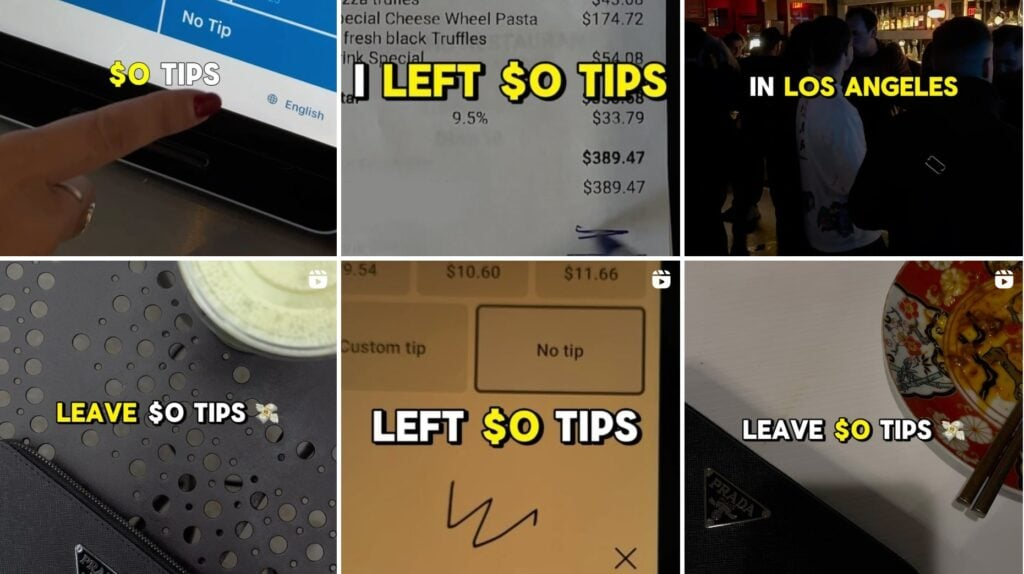With President Trump’s notable pledge to end taxes on tips, questions as to how tips became such a vital part of wages in the service sectors have arisen. Moreover, the tip’s prevalence now extends beyond just these industries; even some self-checkout kiosks prompt you for a tip these days. This phenomenon, which started as a means of thanking essential workers during the COVID-19 pandemic, has been dubbed by economists as “tipflation.”
A Digital Economy
While it’s certainly not the only factor contributing to tipflation, the rise of new integrated point of sale (POS) systems made by companies like Lightspeed, Clover, GoDaddy, and Square has played a part. Interestingly, these POS systems weren’t popular until the pandemic: a new demand for contactless payment, streamlined online ordering, and remote management forced the transition. Because these systems embed tipping options by default, they’ve helped fuel tipflation. And the settings are adjustable; oftentimes, merchants will set the minimum tip option at 10%, rather than 0%, such that the consumer has to go out of their way and click a few extra buttons if they don’t want to tip.
Essentially, merchants have used these systems to create more pain points for those who don’t want to tip. In the fast-paced context of a busy store, for example, most people want to click one button and get out of line, so they’ll just click the tip option. This doesn’t even take into account the social pressure of the cashier standing right in front of you as you make your decision. Indeed, as a consultant for a local bookstore in my town, I’ve noticed that – after they implemented Square as a POS system – tips went up.
How Behavioral Economics Plays Into It
People would rather avoid losses than seek out gains of equivalent value – that’s simple loss aversion. As we talked about earlier, the very social stigma of clicking “no tip” and being seen as “cheap” is a loss, especially if you go to the store often. That’s one form of ‘guilt marketing.’ Another one is the rise of screen prompts like “your barista relies on tips,” which exploit your empathy and frames tipping as a moral obligation.
To take advantage of loss aversion, businesses could frame tipping prompts around the negative consequences of not tipping instead of the positive consequences of tipping, though I’ve never actually seen it. Somebody should do a study on that! The simple takeaway is that social cost influences economics decisionmaking.
The fact that POS systems have tip suggestions – in tandem with the buttons for those options being much bigger than all others on the screen – creates another bias. It sets expectations for tips and pushes consumers toward following them, even if they significantly exceed industry standards.
Consumer Backlash
In Japan, it’s considered offensive to give a tip. In the US, where the federal minimum wage for tipped employees hovers around $2 per hour, it’s the opposite. Clearly, our tipping culture is unique. But tipflation has not gone unnoticed – consumers feel bombarded and are getting angry. A growing sentiment that tipping systems are exploitative has emerged. Last year, a man in LA went viral on TikTok for recording himself giving $0 tips to service workers. Many of the top comments actually praised him (read more here).

Clearly, as tip demands in unconventional settings ramp up, consumers are becoming aware of the behavioral economics behind it. The response from some, though, is to dodge the tip altogether. This is detrimental for service workers who actually depend on tips as a means of income and ought to be corrected. Consumers should rethink when tipping is appropriate while businesses should recognize that some means of collecting tips may result in the long-term alienation of their consumers. Finding a moderate balance is in the best interest of both consumers and small businesses.
Sources
[Image] https://hotchkissrecord.org/2023/12/tipflation-has-gotten-out-of-hand/
[Image] https://abc7ny.com/post/tipping-digital-tip-jar-guide-system/12583116/
[Image] https://gizmodo.com/l-a-influencer-instagram-tiktok-no-tip-service-workers-1851560478
